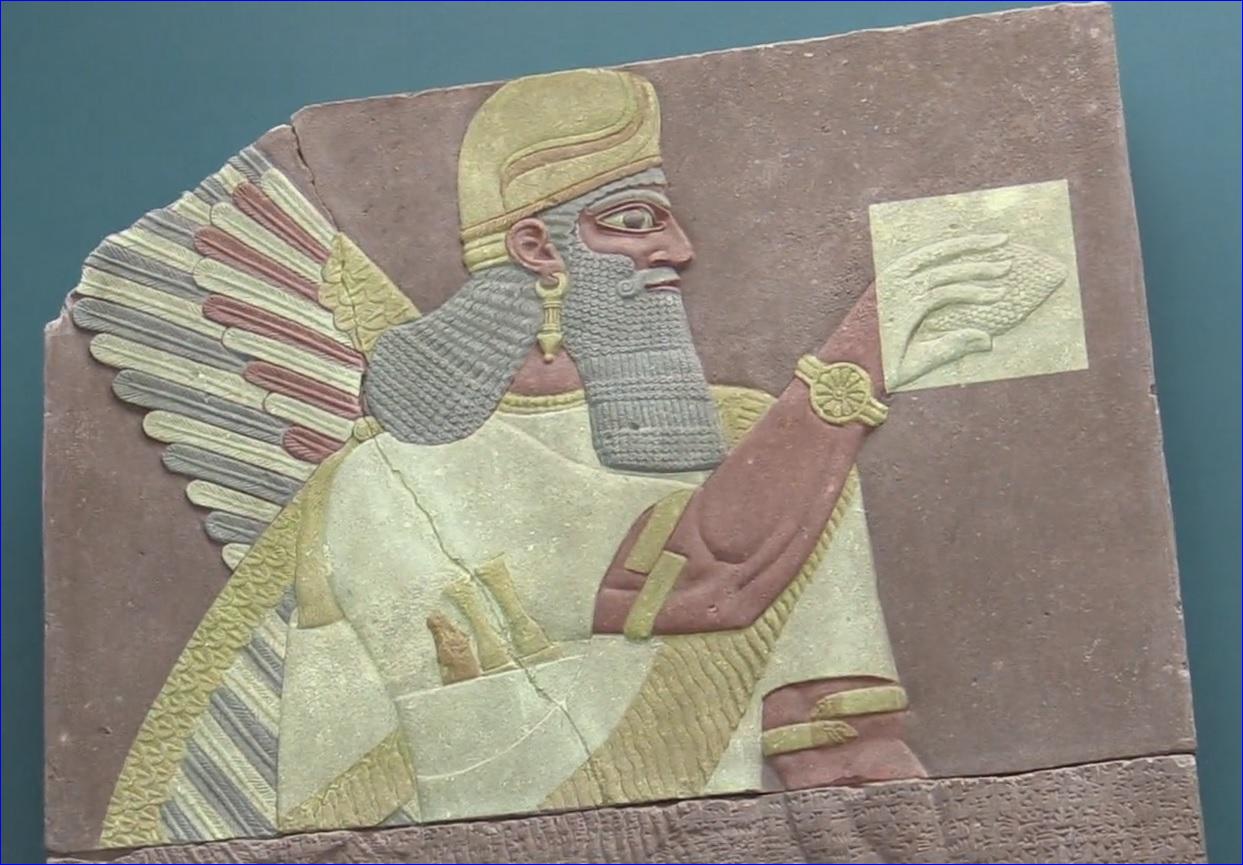


"We can now reconstruct a little of what the ancient viewer would have been able to see in the ninth century BCE," said classics professor James Higginbotham, curator for the Museum's ancient collection.
"While visitors today can appreciate the carved form and detail of Bowdoin's Assyrian reliefs, the ancient viewer was treated to a much more colorful display," said Higginbotham. "Ancient sculptures as a rule were finished with paint that helped accentuate the figural and decorative elements of the composition. Tha's what we're trying to recreate."
The artifact in question is the Winged Spirit (or Apkallu), a stone relief excavated near Mosul in northern Iraq about one hundred and seventy years ago. Higginbotham, along with academic technology consultant Paul Benham, spent some time piecing together information about what colors this relief would have been painted. They used spectrographic analysis of the minute samples of paint still found on some artifacts, including this one. They have also been studying color plates in the Bowdoin library collections from Sir Austen Henry Layard, who led the expedition that uncovered this and other reliefs in the 1840s.
The wings, beard, crown and some of the robes on this particular figure take on a new life, as shades of gold, red, blue, white are "digitally painted" onto the relief--colors that can change with a click of the mouse. The brightness of the color depends on the level of ambient light, so the darker it is, the more colorful the display. The "digital painting" was done by Benham using a software program called MadMapper and a powerful projector, which is necessary, he explained, because of the bright ambient light (the reliefs are on display in the Museum's upper level, visible through a large window facing Maine Street).
"If we could hide the projector, then you might think, and some people have indeed been fooled into thinking, that we have physically painted the relief," said Benham. Higginbotham said he had actually been approached by one or two people "demanding to know why we had painted these ancient reliefs!" The next phase of the project, they said, is likely to involve an interactive element, where gallery patrons can tinker with an on-site computer to adjust the colors on the relief and "repaint" it to their own preferences.

or register to post a comment.